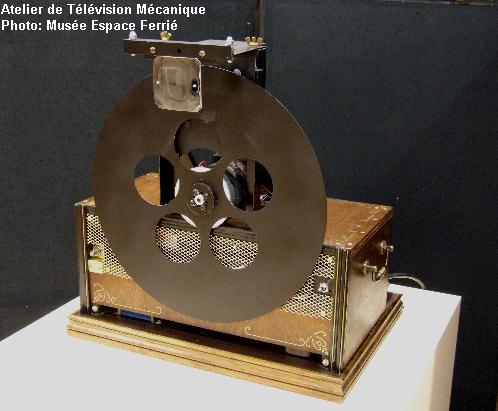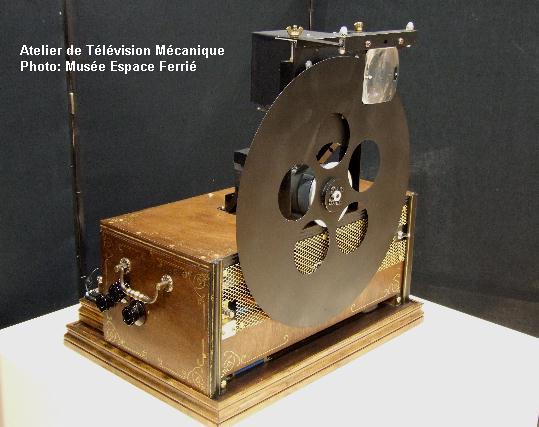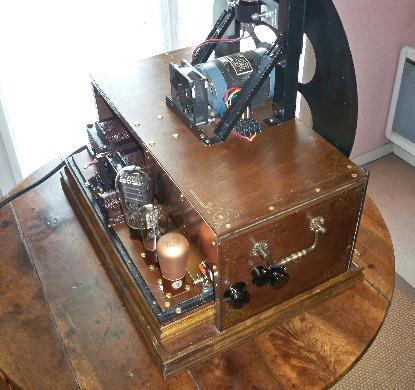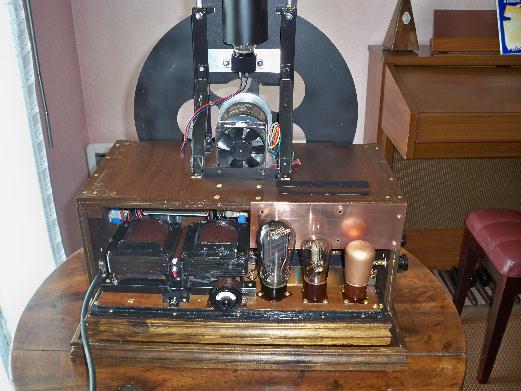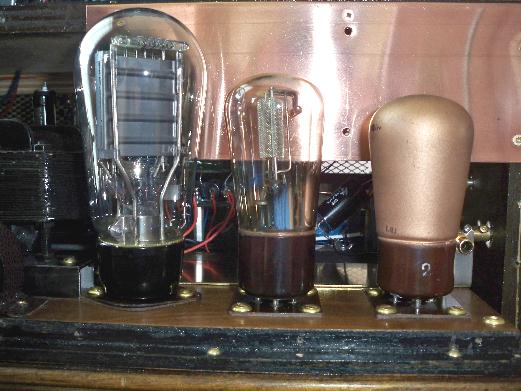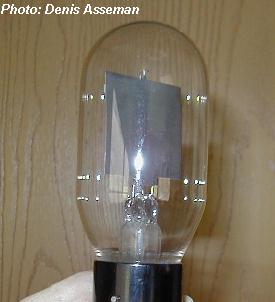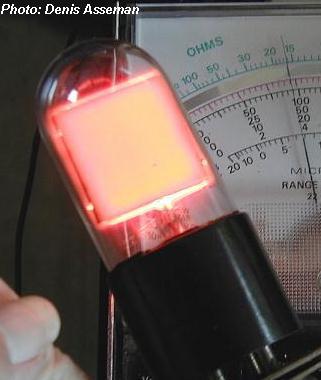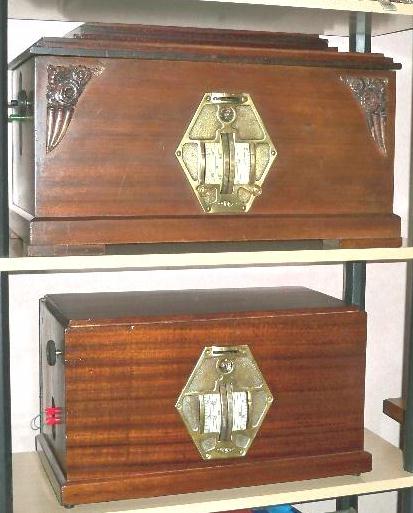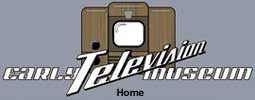 |
 |
Nipkow disc television machine for 30 lines (1930 vintage replica)
Made by Roger DUPOUY. Sold in March 2011
History.
In 1928, Ernest CHAMON, President of the Compagnie des Compteurs de Montrouge (C.D.C.) goes to London on a business trip, accompanied by his Director Mr. Jean Le DUC. Interested in the recents Baird experiments on long distance TV transmission, they met him in London and attended a demonstration in his laboratory. Upon their return to France, Ernest CHAMON, impressed by what he saw, asked Jean Le DUC to create a television laboratory at the C.D.C. in Montrouge near Paris. Soon, Mr. Le DUC, found in René BARTHELEMY, a highly skilled french mathematician, issued from the Electricity High School. (actually SUPELEC) the right person to manage the new television laboratory.
Then, René BARTHELEMY met John BAIRD in London and gathered as much technical information as he can. The C.D.C. TV laboratory was fully operational by 1929 and by 1931 took place at the city of Malakoff near Paris, the first public demonstration of television. Upon request of its director Mr. Paul JANET, the location choosed for such event has been the Electricity High School amphitheater.
As soon as he came back from London, BARTHELEMY analyzed the characteristics of the BAIRD synchronizing system which, he thought, presented limitations for giving a good image stability. He calculated that it is useless to send a synchro pulse at each begining line, but only one per frame would be sufficient to give a good stability (of course this is not right anymore with electronics television systems, where line synchronization is mandatory).
Then, Barthelemy fully oriented his studies toward the thorny problem of synchronization and consequently, submitted several patents as results to his work on this question.
During this period, he communicated the results of his work to the French Sciences Academy and make regular conferences.
Whereas englishes kept on working the vertical 7/3rd image format , the C.D.C. in France and TEKADE in Germany, quickly adopted the 4/3 format, which appeared to be more convenient for movies broadcasting through television. Consequently, an early telecinema is build and operational at the C.D.C. laboratory as soon as 1931.
After the first BARTHELEMY's public demonstration of television in february 1931 in Paris, one can say that the television did came out of the laboratory. But it remains a lot of work to do to develop it as an marketable media, attractive and affordable for a wide audience. By that time, specifics requirements arises, dealing with the definition (number of lines) and the image size.
By 1929, when BARTHELEMY begin his experimentals TV transmissions on 30 lines at the C.D.C. laboratory, only few people in France are able to see them, because of the lack of specific components. Later on, in 1932, the scientist Marc CHAUVIERRE, hired as a salesman and radio laboratory manager at INTEGRA, ask the company to produce and market some television kits.
Those kits, same as for the BAIRD's TELEVISOR kit, consisted mainly in mechanical parts such as a scanning disc, a motor, a phonic wheel and a neon lamp assembly. Once mounted on a frame, the neon lamp had to be connected to a radio receiver amplifier.
The majority of the 1930 french TV experimenters were people with knowledge in electricity or radio, and for the most, they build themselves their scanning machine.
Characteristics of the prototype:
This machine mounted on a wooden frame, has been designed using as much as possible the same schematic and vintage components as in 1930. So, the three lamps of the amplifier includes a PX4 english Gecovalve power triode and two triodes (RS424 Visseaux - E424 Philips). The amplifier drive a neon lamp. The power transformer and the filter coil are genuine parts of the early 30's.
The 30 holes Nipkow scanning disc is driven by a synchronous motor provided by Peter Yanczer, and speed controlled by the frequency of the main line.
The image format being 4/3, it is possible to visualize movies on this machine, thank to the Aurora multi-standards video converter.
